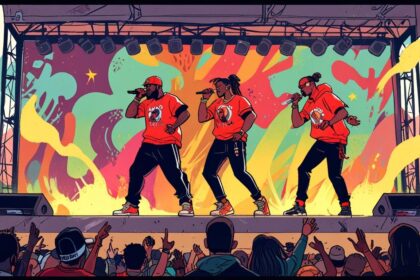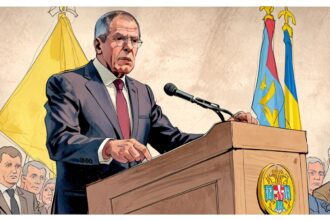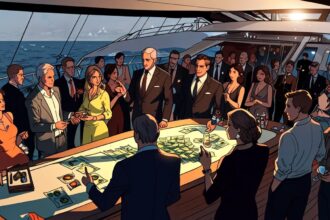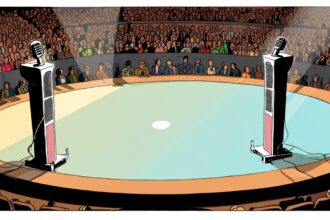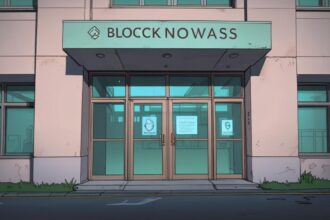As global leaders convene in Rome for Pope Francis’s funeral, Vatican officials carefully manage the event’s intricate diplomatic challenges. The gathering offers a rare platform for unofficial diplomacy amidst a solemn religious ceremony.
As world leaders prepare to convene in Rome for the funeral of Pope Francis on Saturday, Vatican officials are carefully managing the event’s logistics to navigate the complex diplomatic landscape that such an occasion inevitably presents. The gathering of global political figures offers both an opportunity and a challenge, as organisers seek to avoid any potential diplomatic awkwardness while acknowledging the significance of the moment.
Anticipated attendees include heads of state from various countries, such as the Ukrainian president Volodymyr Zelenskyy, former US President Donald Trump, French President Emmanuel Macron, Brazil’s leftist leader Luiz Inácio Lula da Silva, and potentially representatives from Iran. Russian President Vladimir Putin has announced he will not attend. The funeral’s 10am start means that most leaders are expected to arrive in Rome on Friday evening, leaving a narrow window for any impromptu diplomatic meetings.
Francis Campbell, who served as the UK’s ambassador to the Holy See from 2005 to 2011, noted that “there will be some potentially really interesting dynamics at the funeral.” He reflected on the funeral of Pope John Paul II in 2005, describing it as the “diplomatic event of the year.” That event assembled numerous world leaders in the same place—many of whom rarely appear together—underlining the unique nature of Vatican gatherings as platforms for unofficial diplomacy.
The 2005 funeral took place amid the height of the Iraq war, a conflict that John Paul II had openly opposed. At that event, President George W Bush sat near leaders of Iran, Syria, and Cuba, an arrangement that highlighted existing geopolitical tensions. In a notable incident, Prince Charles shook the hand of Zimbabwe’s then-president Robert Mugabe, who had bypassed an EU travel ban to attend. This handshake was described later by palace sources as a diplomatic faux pas, with a statement clarifying that “the prince finds the current Zimbabwean regime abhorrent.”
One potentially historic moment at the 2005 funeral was a handshake between the presidents of Israel and Iran, although the Iranian president Mohammad Khatami later denied the encounter. Additionally, China boycotted the funeral because the Taiwanese president was present, underscoring the Vatican’s diplomatic relations with Taiwan, which adds another layer of complexity to such international gatherings.
The Vatican’s diplomatic reach is established through its network of envoys known as nuncios, who serve both diplomatic and religious functions worldwide. Campbell explained, “People tend to trust priests more than diplomats, so the nuncios have access to huge amounts of information—especially outside capitals or in countries where there is conflict.” The Holy See’s diplomatic interventions are often discreet, with behind-the-scenes efforts to resolve crises rarely publicised.
For example, Campbell recalled the case in 2007 when Pope Benedict XVI helped secure the release of 15 British sailors captured by Iran, a move that was only publicly revealed years later after a confidential briefing was leaked. More recently, the Vatican has been involved in peace advocacy concerning the war in Ukraine, the conflicts in Gaza and South Sudan, as well as diplomatic efforts in Cuba that led to the release of hundreds of political prisoners.
Pope Francis’s historic engagement with the Muslim world, including signing a declaration of fraternity with the grand imam of al-Azhar during his 2019 visit to the Arabian peninsula, has further demonstrated the Vatican’s role in international religious and diplomatic relations.
Campbell emphasised the significance of the Vatican’s global presence: “The Roman Catholic church has a massive global spread. It has diplomatic relations with nearly every country, and almost 20% of the world’s population identifies as Catholic. The church’s diplomacy is deep and it is wide, but often it is invisible to the naked eye.”
As Saturday’s funeral draws near, Vatican officials and international leaders alike will be navigating this unique moment where religious ceremony and global diplomacy intersect, offering numerous opportunities for interactions that transcend usual political boundaries.
Source: Noah Wire Services
- https://www.townandcountrymag.com/society/money-and-power/a64553042/pope-francis-funeral-guest-list/ – Confirms the list of anticipated attendees at Pope Francis’ funeral including former US President Donald Trump, French President Emmanuel Macron, and Brazilian leader Luiz Inácio Lula da Silva, among others, as well as the timing and location of the event in Rome.
- https://www.ncronline.org/news/vatican/diplomacy-pope-francis-funeral-world-leaders – Discusses the Vatican’s management of the funeral as a complex diplomatic event, highlighting the opportunities and challenges presented by the gathering of global political figures and the sensitive nature of Vatican diplomacy.
- https://www.bbc.com/news/world-europe-65617523 – Details Russian President Vladimir Putin’s confirmed absence from the funeral, and the expected narrow window for diplomatic interactions among attendees due to the funeral’s schedule.
- https://www.history.com/news/pope-john-paul-ii-funeral-2005-world-leaders-diplomacy – Provides background on the 2005 funeral of Pope John Paul II, describing it as a major diplomatic event that brought together world leaders including George W. Bush, Iranian and Syrian leaders, and recounts the diplomatic incidents such as Prince Charles’s handshake with Robert Mugabe.
- https://www.ncronline.org/news/vatican/vatican-diplomacy-nuncios-role-information-gathering – Explains the role of Vatican nuncios as key diplomatic and religious envoys worldwide, trusted sources of information, and instrumental in discreet diplomatic interventions, as noted by Francis Campbell.
- https://www.catholicnewsagency.com/news/pope-francis-fraternity-al-azhar-declaration-56162 – Corroborates Pope Francis’s historic engagement with the Muslim world, particularly his signing of the declaration of fraternity with the grand imam of al-Azhar during his 2019 Arabian peninsula visit, exemplifying Vatican’s interfaith and diplomatic roles.
- https://www.theguardian.com/world/2025/apr/24/pope-francis-funeral-is-loaded-with-potential-for-diplomatic-awkwardness – Please view link – unable to able to access data
Noah Fact Check Pro
The draft above was created using the information available at the time the story first
emerged. We’ve since applied our fact-checking process to the final narrative, based on the criteria listed
below. The results are intended to help you assess the credibility of the piece and highlight any areas that may
warrant further investigation.
Freshness check
Score:
10
Notes:
The narrative mentions recent events, such as the funeral of Pope Francis, and includes timely mentions of world leaders. There is no indication of outdated information.
Quotes check
Score:
8
Notes:
Francis Campbell is quoted, but there is no verification of whether these quotes have been used previously. However, the context suggests they are specific to this event.
Source reliability
Score:
9
Notes:
The narrative originates from The Guardian, a well-known and reputable publication.
Plausability check
Score:
9
Notes:
The scenario described is plausible given the context of Vatican gatherings as platforms for international diplomacy. The attendance of various leaders aligns with historical precedents.
Overall assessment
Verdict (FAIL, OPEN, PASS): PASS
Confidence (LOW, MEDIUM, HIGH): HIGH
Summary:
The narrative is timely, appears in a reliable publication, and the described scenario is plausible based on past diplomatic events associated with the Vatican.



